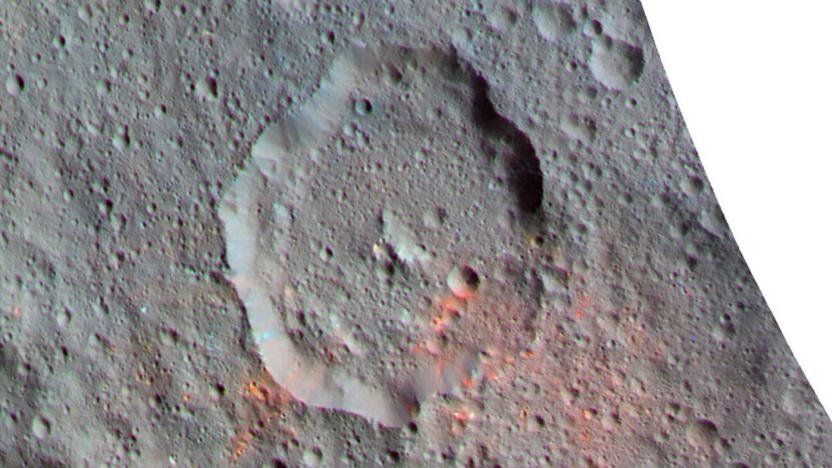organicmaterials
Latest

Dawn probe spots organic materials on dwarf planet Ceres
Ceres is now officially included the list of celestial bodies where we've found organic molecules. NASA's Dawn scientists have spotted the presence of organic compounds on the dwarf planet using the spacecraft's visible and infrared mapping spectrometer (VIR). They found the organics covering an area measuring around 400 square miles in and around Ceres' northern-hemisphere crater called Ernutet. They also found smaller patches of land with organics several miles east and west of Ernutet, as well as in another crater. That's pretty abundant, considering Christopher Russell (Dawn's principal investigator) said they weren't "expecting to see something like this on the surface of Ceres" at all.

Inhabitat's Week in Green: interview with Chevy, breakthrough LED light and spider silk violin strings
Each week our friends at Inhabitat recap the week's most interesting green developments and clean tech news for us -- it's the Week in Green. This week the Chevy Volt lit up the newswires after GM announced plans to temporarily halt its production -- Inhabitat brought you an interview with Chevy on the shutdown and explained why it doesn't foretell electric vehicle doomsday. We also showcased you the hottest new vehicles straight from the Geneva Motor Show -- including Infiniti's sexy Emerg-E sports car, Toyota's ultra-compact FT-Bh hybrid, and Nissan's Hi-Cross hybrid crossover. On the lighter side of things, this week a LEGO space shuttle soared into the stratosphere, we featured an insane Russian bicycle powered by a chainsaw, and DARPA's robotic cheetah broke a world land speed record. Groundbreaking green architecture projects reached for the sky as Tokyo's Sky Tree was crowned the world's second tallest building and the eVolo Skyscraper Competition unveiled its futuristic finalists -- including an energy-generating tower made entirely from trash, a spiraling water-storing spire for the Himalayas, and a spherical underwater skyscraper that recycles plastic pollution. New York City also made waves as Mayor Bloomberg called for a solid waste to energy facility, Terreform proposed plans for a self-sufficient NYC covered with vertical gardens, and a new cupcake ATM hit the streets of Manhattan.It was also a big week for consumer tech as Apple launched its brand new iPad -- however in the light of recent criticism over Apple's labor conditions we took a look at the human cost of Apple's products and we shared 5 things you should know before buying the iPad 3. Meanwhile, researchers at MIT developed a breakthrough LED light that exceeds 100 percent efficiency, and we brought you an inside look at 5 high-tech green data centers that serve the environment. Finally, scientists discovered several amazing new uses for spider silk by weaving it into violin strings that create superior symphonic sounds and insulation that conducts heat 800 times better than any other organic material.

Flexible, stretchable, rubbery OLED prototype shown off in Tokyo
Electrical engineering researchers at the University of Tokyo have developed a flexible, stretchable OLED that acts something like rubber, and does not tear or break when stretched. The material is produced by spraying a layer of carbon nanotubes with a fluoro-rubber compound, creating a rubbery, conducive material. The current, monochrome display prototype has a resolution of just 256 pixels, is 10-centimeters square, and can apparently be folded about 1,000 times with out falling apart, tearing, or imploding. The team is presenting its findings in the British science journal Nature Materials this month.[Via Slashgear]
